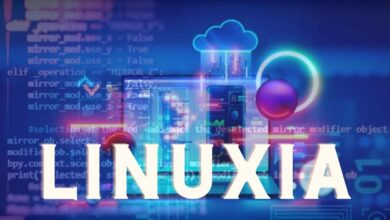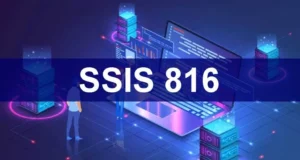
Free Government Phones iPhone (Eligibility, Type & Application)
Did you know that the Lifeline Assistance program, often referred to as the “free government phone” program, offers iPhones as well? This program aims to support low-income individuals and can provide high-tech smartphones like the iPhone.
Here are the main points to note:
Eligibility: You may qualify based on income, participation in federal programs, disability status, or receiving unemployment benefits.
Available iPhone models: Choices include the iPhone 6S, iPhone SE, iPhone 7, and iPhone 8.
Application process: To apply, visit the Lifeline Support website, verify your eligibility, complete the application, and await approval.
If you meet the criteria for Lifeline assistance, you might soon have access to a top-notch Apple device without straining your finances.
Understanding Free Government Phone Programs
The Lifeline program, a federal assistance initiative established in 1985, has played a crucial role in keeping low-income households connected. Originally focused on landline services, Lifeline has adapted to technological advancements. Today, it encompasses mobile services and broadband internet access.
Here’s how it operates: Eligible individuals, based on income or participation in certain federal programs like SNAP or Medicaid, can receive a monthly discount on their phone service. In some cases, this discount covers the entire cost, hence the term “free government phones.”
Numerous service providers participate nationwide, offering various plans and devices, ranging from basic flip phones to high-end smartphones like iPhones.
However, there are regulations to consider:
- Only one Lifeline benefit is allowed per household.
- Yearly recertification is necessary to demonstrate ongoing eligibility.
- Service may be discontinued if not utilized for 30 days.
iPhone Models Available for Free Government Programs
There’s a misconception that free government phone programs only offer basic models, but that’s not entirely true. While you won’t find brand-new iPhone 13 Pro Max options, these programs do provide access to iPhones, albeit older models.
Before you start dreaming of the latest iPhone, it’s essential to manage expectations. Typically, these initiatives offer older iPhone models, but they’re still reliable devices packed with great features – and the best part? They’re free.
Commonly provided models include the iPhone 6S or iPhone SE, both of which offer solid performance and impressive features. The iPhone 6S features a 4.7-inch display and a 12 MP camera, while the iPhone SE delivers power in a compact package.
In some instances, you might come across programs offering slightly newer models like the iPhone 7 or iPhone 8, but their availability varies based on factors like program funding and inventory levels.
Here’s a breakdown of potential devices:
- iPhone 6S: Durable with good battery life.
- iPhone SE: Compact yet powerful.
- iPhone 7 & iPhone 8: Availability depends on program specifics.
Securing one of these iPhones isn’t just about luck; it requires meeting specific criteria outlined by each program. So, be sure to thoroughly review eligibility requirements before applying. If your first attempt isn’t successful, don’t lose hope – inventory changes regularly, so it’s worth trying again.
Eligibility Criteria for Receiving a Free iPhone
If you’re aiming to secure a free iPhone through the government’s Lifeline Assistance program, it’s essential to understand the eligibility criteria.
First and foremost, your household income is a crucial factor. If it falls at or below 135% of the Federal Poverty Guidelines, you’ve successfully cleared one hurdle.
Here’s a breakdown with some figures to provide context:
| Year | Household Size of 1 | Household Size of 2 |
| 2021 | $17,388 | $23,517 |
These are just a couple of examples; the thresholds increase proportionally for larger households.
Another eligibility criterion is participation in federal assistance programs. If you’re enrolled in programs like SNAP (Supplemental Nutrition Assistance Program), Medicaid, SSI (Supplemental Security Income), or Federal Public Housing Assistance (FPHA), you’ve met another requirement.
Additionally, disability status can make you eligible. If a member of your household has a severe disability and receives income from Social Security Disability Insurance (SSDI), you qualify.
Surprisingly, being unemployed can also be beneficial. Unemployment benefits count towards eligibility as well.
It’s important to note that meeting these criteria doesn’t guarantee immediate access to a free iPhone. Availability can vary based on location and other factors. However, don’t let that deter you!
The application process is more manageable than it may seem, and there are opportunities available for many of us.
How to Apply for a Free Government iPhone
So, you’re interested in securing a free iPhone through government programs? Let me walk you through the process.
Firstly, it’s important to note that this program is specifically for individuals and families facing financial hardships. If that applies to you, let’s dive in!
Start by visiting the Lifeline Support website or reaching out to them directly. This federal benefits program aims to provide discounted or free phone services to those in need, without any hidden costs or fees associated with applying.
Next, confirm your eligibility. You’ll need to provide proof of income or participation in federal assistance programs such as:
- Medicaid
- Supplemental Nutrition Assistance Program (SNAP)
- Federal Public Housing Assistance
- Veterans Pension and Survivors Benefit
Once you’ve established eligibility, complete the application online or request a paper form if preferred. After submission, be patient as approval may take up to 30 days.
Lastly, celebrate! Upon approval, your new iPhone will be shipped directly to you within 10 business days.
The Role of Lifeline Assistance in Providing Free iPhones
Lifeline, a federal program, has played a pivotal role in providing free government phones, including iPhones, to bridge the digital gap and ensure universal access to essential communication services.
To understand its mechanism better, let’s delve into its workings. Lifeline was established by the Federal Communications Commission (FCC) with the primary objective of making communication services more accessible to low-income consumers. You might wonder how iPhones fit into this equation.
Interestingly, Lifeline doesn’t limit itself to basic cell phones. Through partnerships with service providers, eligible individuals can acquire smartphones like iPhones. While they may not be the latest models, they still offer the functionalities of iPhones.
But why are iPhones significant? While any phone can handle calls and texts, smartphones like iPhones offer much more. They provide easy access to online information, a crucial aspect in our digital era.
However, eligibility isn’t open to everyone seeking a free phone. Specific criteria, often tied to income or participation in federal assistance programs, determine eligibility.
In essence, Lifeline isn’t just about distributing free phones; it’s about fostering equal opportunities for everyone to engage with the digital world of today.
Popular Service Providers Offering Free Government iPhones
Let’s address the main question: “Who are the service providers offering free iPhones?”
Assurance Wireless stands out as one of the prominent players in this arena. With a solid reputation and experience in providing government phones, they offer free iPhone models through their Lifeline Program.
SafeLink Wireless is another notable provider participating in the Lifeline Program. Like Assurance, they extend access to free smartphones, including iPhones, to eligible individuals.
Q Link Wireless is also worth mentioning, known for its reliable services tailored to those qualifying for government assistance programs.
It’s essential to note that not all providers offer the same iPhone models or generations. Typically, they offer older models rather than the latest releases. Nonetheless, receiving an iPhone at no cost is a significant benefit.
Keep in mind that eligibility criteria vary among providers, so it’s crucial to review these details before applying.
Additionally, stay alert for other service providers entering this space. With increasing competition and technological advancements, more companies might offer improved deals on government-assisted cell phone services. Stay informed for potential opportunities!
Beyond the Device: Additional Services Included
When discussing free government phones like iPhones, it’s important to understand that it’s not just about the device itself. There’s more to this package than what initially meets the eye. Let me uncover the details for you.
Unlimited Talk and Text Features
Yes, you heard correctly – unlimited! Gone are the days of watching the clock during calls or rationing text messages. Now, you can chat freely with friends and family without any worries or restrictions.
Data Allocation
Don’t get overly excited – while it won’t be an infinite supply, there’s certainly enough data to cover essential browsing needs. Typically, these services offer around 3GB of monthly data.
But hold on, there’s more! Free government phone programs often come with additional perks, such as:
- Free voicemail services.
- Caller ID functionality.
- Call waiting options.
It’s worth mentioning that these features may vary depending on the service provider, so it’s crucial to check what’s included in your specific plan.
Customer Support
Picture having a dedicated team at your disposal, ready to assist with any issues that may arise. Well, with most free government phone providers, you’re covered in this department too!
So, beyond the attraction of a free iPhone, it’s essential to remember the array of other benefits bundled into these initiatives: a comprehensive set of communication tools to keep us connected without straining our budgets!



